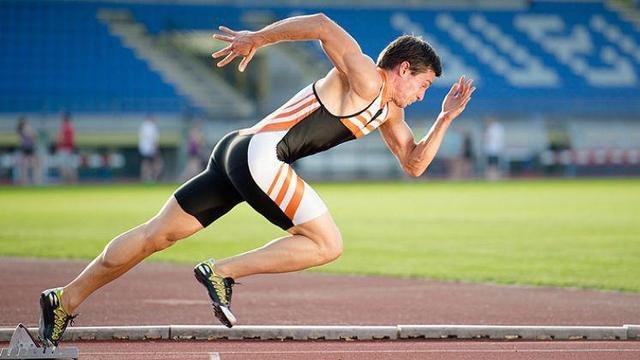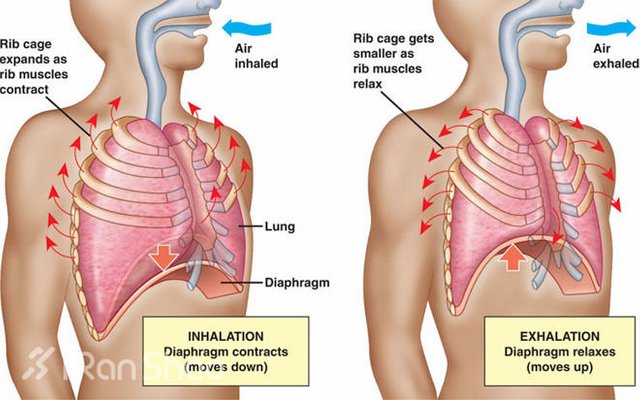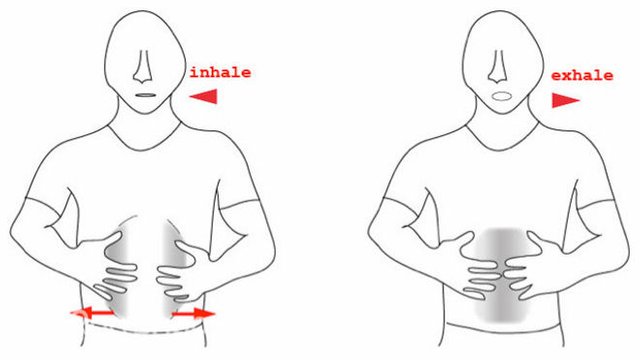Many runners, especially beginners, don't breathe very well or, perhaps, efficiently. You may have such experience, the speed of running as long as a fast, a steep slope, a nervous, or the game will be gradually out of breath, as if to back an oxygen tank to have enough oxygen can be used, just breath comes gradually heavy legs, hunched over, and even annoying side abdominal pain, had to reduce speed, not slow.

Most people blame cardio training and lack of muscle strength for running and climbing.
If you're used to chest breathing, you're more likely to passively let air out of your lungs as you exhale, which is often not thorough enough to allow you to take in a limited amount of oxygen on your next inhalation. This less efficient breathing is called "shallow breathing."
Moving muscles need a continuous supply of oxygen in order to continue to move, inhaled oxygen is not enough, muscles do not have energy, have to reduce work efficiency, you also run more and more difficult.

May be hard to imagine, but the fact is that between the diaphragm and costal muscle burden as much as 80% of respiration, from the above we can see that our diaphragm and ribs make chest expansion (suction) or reduction (out), if you to the starting point of the diaphragm to breathe, can introducing air into the abdomen, increase the volume of air into the body, but also because of increased the retroperitoneal space, chest ups and downs will be relatively small, and then deep navigated the oxygen into the lungs. A study by brunel university in the UK looked at the relationship between the breathing muscles of marathon runners and the muscles in their legs.
"The deeper the breath, the more active the lobes, and the more efficient the alveoli are at exchanging oxygen and carbon dioxide," says Dr. David roth of the university of California medical center. As for the problem of side abdominal pain that some runners have, in addition to the causes of exercise overload, it is also related to the lack of training of the deep muscles near the diaphragm, resulting in the poor ability of the diaphragm to contract. Once the intensity of exercise increases, it is easy to twitch and cause side abdominal pain.
What is efficient breathing? Compared with shallow breathing, the deep "abdominal breathing" of the abdomen and diaphragm is used to make exhaust become active. On the one hand, it can more thoroughly discharge the carbon dioxide after metabolism; on the other hand, it can also increase the capacity when inhaling, let the oxygen into the alveoli, and improve the efficiency of blood oxygen exchange. At the same time, this deep muscle-based breathing also helps you focus on your core muscles, making your running and movement less likely to be distorted by increased intensity or distance.

This is where belly breathing comes in. If you've never tried it before, try following these steps:
1, first you must have good standing posture, stooping will compress the chest and abdominal cavity, so that the volume of inspiration smaller, the compressed diaphragm and core muscle group will be difficult to cause; Try feet with shoulder width, upper body straight, imagine your spine gradually elongated, from the top of the head to the sky extension, many people's shoulders easy tension, might as well jump, turn the shoulder, let the shoulders naturally hanging on both sides of the body.
2, draw a bit air gently first, put both hands respectively before the bosom and abdomen, next slow and deep, gradually close abdomen, one side by mouth exhale, you can feel diaphragm is loosened naturally rise, the air of abdomen and chest cavity eduction. If you do well, the hand on your stomach will recede with your belly, while the hand on your chest will press in slightly or not at all.
3, as far as possible to thoroughly vomit clean, then slowly inhaling from the nose, while inhaling the attention to the abdomen, let the abdomen with the air inhalation slowly expansion, you will feel the tension of the diaphragm gradually increased, contraction and decline, the air from the abdomen began to introduce, gradually fill the whole abdomen and chest. If you have caught the technique of belly breathing, the hand on your abdomen will move with the introduction of air and the belly will bulge, and the hand on your chest will rise slightly to the surface. 4, repeat steps 2 and 3 times, realize active exhaust, relax inspiratory feeling, feel the chest and the abdomen, is not very smooth, if going to review whether or not his upper body upright, inhale and exhale slowly and deeply, put ideas in the abdomen, the abdomen, nose and mouth to guide air discharge and suction.